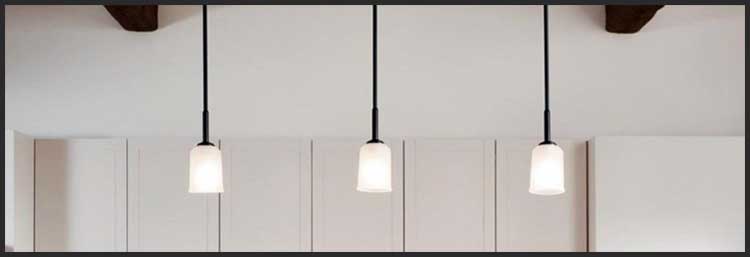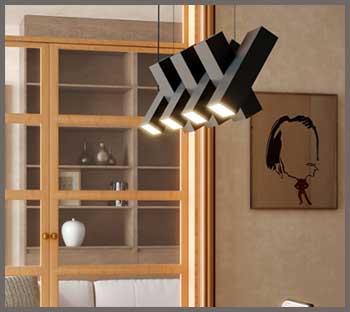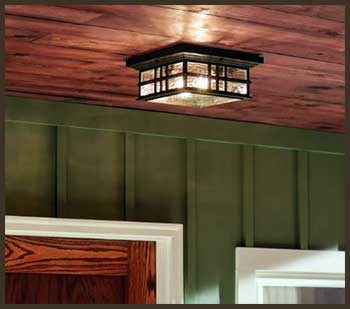I’m not one to overhype things, but let me tell you—Design Direct Lighting is a game-changer for anyone looking to elevate their space. Whether you’re sprucing up your living room or setting the mood for a cozy office, their fixtures blend style, function, and durability in a way that’s hard to beat.
I’ve been using their products for months, and the difference they’ve made in my home is unreal. Trust me, if you’re on the fence about upgrading your lighting, Design Direct is worth every penny.
Let’s explore why you need this in your life.
My Experience With Design Direct Lighting

Picture this: I’m sitting in my dimly lit living room, squinting at my book, frustrated by the harsh shadows cast by my old ceiling light. It was functional, sure, but it lacked soul. That’s when I stumbled across Design Direct Lighting.
I decided to try their modern pendant light for my dining area and a sleek wall sconce for my hallway. The moment I flipped the switch, my home transformed. The pendant bathed my dining table in a warm, inviting glow, perfect for dinner parties or late-night snacks. The sconce? It turned my boring hallway into a chic, gallery-like space.
Installation was a breeze. I’m no electrician, but the instructions were clear, and the fixtures came with everything I needed. What struck me most was the quality—solid metal frames, flawless finishes, and bulbs that didn’t flicker or hum.
I went with their LED options, which promised energy savings, and my electric bill has noticeably dropped. The pendant’s adjustable brightness let me set the mood for everything from casual brunches to romantic dinners.
I even caught my friend staring at the sconce, asking where I got it. That’s when I knew I’d made the right choice.
But it wasn’t just about looks. These lights felt intentional, like someone actually thought about how people live. The pendant’s wide beam illuminated my entire dining area without glaring in my eyes, and the sconce’s focused light highlighted my favorite wall art perfectly.
I’ve had them for six months now, and they still feel as fresh as day one. No loose screws, no fading finishes—just reliable, beautiful lighting. My only regret? Not upgrading sooner. If you’re tired of lackluster lighting, Design Direct is the way to go.
Pros of Design Direct Lighting
- Exceptional Build Quality

I’ve handled my fair share of flimsy light fixtures, but Design Direct’s products are built like tanks.
The materials—think brushed nickel, polished chrome, and sturdy glass—feel premium the moment you unbox them.
I dropped a sconce during installation (oops), and it didn’t even scratch.
Their attention to detail, like seamless welds and perfectly aligned components, shows they’re not cutting corners. You can tell these are designed to last, which is a huge win when you’re investing in something for your home.
- Versatile Design Options
Whether your vibe is industrial chic or minimalist modern, Design Direct has you covered. Their catalog is a goldmine of styles—pendants, chandeliers, wall sconces, even outdoor lanterns. I went for a mid-century modern pendant, but I was tempted by their rustic barn lights and sleek LED strips too.
The variety means you’re not stuck choosing between ugly and uglier. Plus, their finishes (matte black, antique brass, you name it) make it easy to match your existing decor. It’s like they read my mind about what my home needed.
- Energy Efficiency That Saves You Money
Let’s talk numbers. My old incandescent bulbs were eating up electricity like nobody’s business. Switching to Design Direct’s LED fixtures cut my lighting costs by about 20%—and I’m not exaggerating.
Their LEDs use less power while delivering the same (or better) brightness. Some models even let you dim the lights, so you’re not wasting energy when you want a softer ambiance. It’s a small change that adds up, especially if you’re lighting multiple rooms.
- Easy Installation for DIYers
I’m no handyman, but I got my pendant and sconce up in under an hour each. Design Direct includes clear instructions and all the hardware you need—no running to the store for a random screw. Their fixtures are designed with real people in mind, not just pros.
If you can handle a screwdriver and follow a diagram, you’re golden. For trickier installs, they recommend professionals, but I didn’t need one. That kind of accessibility makes their products a win for folks like me who love a good DIY project.
- Customizable Lighting Experience
One of my favorite things about Design Direct is how their fixtures let you tweak the lighting to suit your mood. Many of their products, like my pendant, come with dimmable LEDs or adjustable beam angles. Want bright light for cooking? Crank it up.
Hosting a movie night? Dim it down. This flexibility makes their lights perfect for multi-purpose spaces. I’ve even played with color temperature settings to make my dining room feel cozier in winter. It’s like having multiple lights in one.
Not-So-Good Parts of Design Direct Lighting
- Higher Upfront Cost

Let’s be real—Design Direct isn’t the cheapest option out there.
Their fixtures can cost a bit more than generic brands you’d find at a big-box store.
My pendant set me back a couple hundred bucks, which stung at first.
But when you factor in the durability and energy savings, it’s less painful.
If you’re on a tight budget, you might need to save up or start with one fixture. For me, the quality justified the price, but I get why some folks might hesitate.
- Limited Budget-Friendly Options
While Design Direct’s catalog is impressive, their budget-friendly selections are a bit sparse. They lean heavily into mid-to-high-end products, which is great for quality but not ideal if you’re looking for something under $50.
I wanted to outfit my guest room on a budget, but their cheapest options were still around $80. They’re worth it, but I wish they had a few more affordable picks for smaller spaces or secondary rooms.
- Shipping Delays Can Happen
My sconce arrived in a week, but my pendant took almost three due to a backorder. I wasn’t thrilled about the wait, especially since I was excited to get my dining room finished. Design Direct’s customer service was responsive when I checked in, but it’s something to keep in mind if you’re on a tight timeline.
I’d recommend ordering early if you’re planning a big reveal or renovation. Once they arrived, though, the wait was forgotten—the quality was that good.
- Bulb Compatibility Issues
Most of Design Direct’s fixtures are LED-focused, which is awesome for efficiency, but some don’t play nice with non-LED bulbs. I tried swapping in an old incandescent bulb for a vintage look, and it didn’t fit properly.
Their website does warn about this, but it’s a bummer if you’re hoping to mix and match. If you’re all-in on LEDs, this won’t bug you, but it’s worth noting if you’re a fan of traditional bulbs.
Maintenance Tips For Design Direct Lighting
- Regular Dusting Keeps Them Shining
Dust is the enemy of any light fixture, and Design Direct’s sleek designs are no exception. I noticed my pendant starting to look a bit dull after a couple of months, but a quick wipe with a microfiber cloth brought back the shine.
For glass or metal fixtures, use a damp cloth (no harsh chemicals) and dry thoroughly to avoid streaks. I make it a habit to dust my lights every month or so—it takes five minutes and keeps them looking brand new.
- Check Connections Periodically
Even the sturdiest fixtures can loosen over time. I had a slight flicker in my sconce after a few months, and a quick check revealed a loose wire in the mounting plate. Grab a screwdriver and gently tighten any screws or connections every six months.
If you’re not comfortable poking around, call an electrician, but most issues are simple fixes. This small step ensures your lights stay safe and functional.
- Use the Right Bulbs
Design Direct’s LEDs are top-notch, but using the wrong bulbs can mess things up. Stick to the recommended wattage and type (usually listed in the manual or on their website).
I learned this the hard way when I tried a cheap off-brand LED that flickered like a strobe light. If you’re replacing bulbs, go for high-quality LEDs with the right lumens and color temperature to match your fixture’s vibe.
- Protect Outdoor Fixtures
If you’re using Design Direct’s outdoor lanterns or wall lights, weatherproofing is key. I have one on my patio, and I make sure to check the seals around the fixture every season to prevent water sneaking in.
Use silicone caulk if you notice any gaps, and clean off dirt or pollen with a gentle soap solution. This keeps rust and corrosion at bay, especially in humid or rainy areas.
- Schedule Professional Inspections
For larger installations like chandeliers or multi-fixture setups, I recommend a professional checkup once a year. I had an electrician look over my dining room pendant after a storm, just to be safe.
They can spot issues like frayed wires or mounting problems that you might miss. It’s a small expense for peace of mind, especially with pricier fixtures.
Comparison of Design Direct Lighting With Other Brands
Let’s stack Design Direct up against some big names: Philips Hue, IKEA, and West Elm. I’ve used all three, so I’m speaking from experience here.
Philips Hue is the king of smart lighting. Their bulbs sync with apps, change colors, and let you control everything from your phone. It’s futuristic and fun, but it’s pricey, and you need a hub to unlock the full experience.
Design Direct doesn’t go as high-tech, but their fixtures are more stylish and don’t require extra gadgets. If you want plug-and-play elegance without fussing with apps, Design Direct wins. Hue’s great for tech nerds, but I prefer the timeless vibe of my pendant.
IKEA’s lighting is budget-friendly and functional—perfect for students or renters. Their stuff is easy to install, and you can’t beat the price (some fixtures are under $20!). But the quality feels cheap compared to Design Direct.
My IKEA lamp started wobbling after a year, and the plastic parts yellowed. Design Direct’s durability and premium finishes blow IKEA out of the water, though you’ll pay more upfront. If you’re after longevity, skip IKEA’s bargain bin.
West Elm leans into high-end design like Design Direct, with gorgeous chandeliers and sconces that scream luxury. But their prices can make your wallet cry—think $500+ for a single fixture. I love West Elm’s aesthetic, but I found Design Direct’s similar styles at half the cost.
Plus, Design Direct’s LEDs are more energy-efficient than West Elm’s often non-LED options. If you want upscale without breaking the bank, Design Direct is the smarter pick.
What sets Design Direct apart is their balance of style, quality, and value. They’re not as tech-heavy as Hue, not as cheap as IKEA, and not as exorbitant as West Elm. For me, they hit the sweet spot—beautiful, reliable lights that don’t require a second mortgage or a tech degree.
Frequently Asked Questions (FAQ)
From my experience, Design Direct Lighting is a solid choice. Their products are high-quality, stylish, and built to last. Customer service was responsive when I had a shipping hiccup, and their website makes it easy to find what you need. The only downside is the price, which can be steep for some budgets. But if you’re looking for durable, attractive lighting that elevates your space, they’re worth it. I’ve had zero regrets since switching to their fixtures.
Direct lighting, like what Design Direct specializes in, focuses light straight onto a surface or area. Think of a pendant shining down on your dining table or a sconce illuminating a hallway. It’s all about creating a clear, concentrated beam to highlight specific spots, unlike ambient lighting that spreads softly across a room. Design Direct’s fixtures excel at this, offering precise illumination that’s perfect for tasks or accentuating decor.
Use direct lighting when you need focused illumination. I rely on it for tasks like cooking, reading, or showcasing artwork. My dining room pendant is a lifesaver for dinner prep, and my hallway sconce makes my paintings pop. It’s ideal for workspaces, kitchens, or anywhere you want clarity without shadows. Just be careful not to overdo it—too much direct light can feel harsh, so pair it with softer ambient lights for balance.
Direct lighting systems, like Design Direct’s, are designed to channel light exactly where you need it. They direct beams to specific areas—think tabletops, walls, or artwork—to enhance visibility or create a focal point. My pendant directs light onto my dining table, making it perfect for meals or board games, while my sconce highlights a family photo. They’re all about precision, ensuring no light is wasted.
Wrapping It All Up
I can’t recommend Design Direct Lighting enough. Their fixtures have transformed my home, blending style, efficiency, and durability in a way that’s tough to beat. From the warm glow of my pendant to the sleek shine of my sconce, every detail screams quality.
If you’re ready to ditch dull lighting and make your space feel alive, Design Direct is the way to go. Trust me, you’ll wonder why you waited so long.
